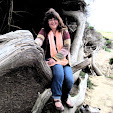Considers 12th-Century Advances in Study
VATICAN CITY, OCT. 28, 2009 (Zenit.org).-
Benedict XVI today considered two branches of theology used in the 12th century, drawing from their contrasting methodologies the wealth and value of both.
The Pope considered "monastic" and "scholastic" theology today during the general audience in St. Peter's Square, as he reflected on what he called "an interesting page of history, regarding the flowering of Latin theology in the 12th century."
"The representatives of monastic theology were monks, in general, abbots, gifted with wisdom and evangelical fervor, dedicated essentially to arousing and nourishing a loving desire for God," he noted.
On the other hand, "the representatives of scholastic theology were cultured men, passionate about research; magistri wishing to show the reasonableness and soundness of the mysteries of God and of man, believed in with faith, of course, but understood also by reason," the Pontiff explained.
He said the "contrasting objectives" of the two disciplines "explain the differences in their method and their way of doing theology."
The first type of theology, the Holy Father observed, was strongly linked to meditation on Scripture.
He said: "In the monasteries of the 12th century the theological method was linked primarily to the explanation of sacred Scripture, of the sacra pagina, to express ourselves as the authors of that period did. Biblical theololy was particularly widespread. The monks, in fact, were all devoted listeners and readers of sacred Scripture, and one of their main occupations consisted in lectio divina, namely, prayerful reading of the Bible."
The Pontiff noted that for these monks, simply reading Scripture was not enough. They sought "the profound meaning, the interior unity and the transcendent message."
"Therefore," he continued, "they had to practice a 'spiritual reading,' leading in docility to the Holy Spirit. Thus, in the school of the Fathers, the Bible was interpreted allegorically, to discover in every page, of the Old as well as the New Testament, what is said about Christ and his work of salvation."
The other type of theology, Benedict XVI explained, was centered on the "quaestio," that is "the problem posed to the reader in addressing the words of Scripture and Tradition."
"In face of the problem that these authoritative texts pose, questions arose and debate was born between the teacher and the students," he said. "In such a debate appeared, on one hand, the arguments of authority, and, on the other, those of reason, and the debate developed in the sense of finding, in the end, a synthesis between authority and reason to attain a more profound understanding of the word of God."
The scholastic methodology gave "confidence to human reason," the Pope added. "Grammar and philology are at the service of theological learning, but so increasingly is logic, namely that discipline that studies the 'functioning' of human reasoning, so that the truth of a proposition seems evident."
The Bishop of Rome emphasized how even today, "reading the scholastic summae, one is struck by the order, clarity, logical concatenation of the arguments, and of the depth of some of the intuitions. Attributed to every word, with technical language, is a precise meaning and, between believing and understanding, there is established a reciprocal movement of clarification."
This type of theology, the Holy Father affirmed, "stimulates us to be always ready to answer anyone asking for the reason for the hope that is in us.""It reminds us," he said, "that there is between faith and reason a natural friendship, founded on the order of creation itself."
On ZENIT's Web page:Full text of the general audience address:




No comments:
Post a Comment